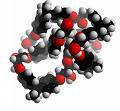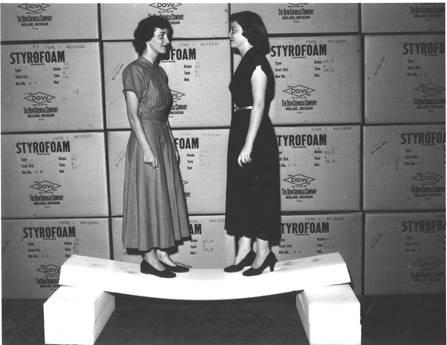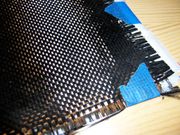Epoxy Resins
We have searched the globe for the
most advanced epoxies ever developed. The 3 dimensional molecular chain of
epoxy offers almost unlimited cross linking potential.
The large
family of epoxy resins represent some of the highest performance resins of
available at this time. Epoxies out-perform all other resin types in terms
of mechanical properties and resistance to environmental degradation, which
leads to their almost exclusive use in aircraft components. As a laminating
resin their increased adhesive properties and resistance to water
degradation make these resins ideal for use in surfboard manufacture. The
term 'epoxy' refers to a chemical group consisting of an oxygen atom bonded
to two carbon atoms that are already bonded in some way.The figure below
shows the idealised chemical structure of a typical epoxy.

Epoxies
differ from polyester resins in that they are cured by a 'hardener' rather
than a catalyst. The hardener, often an amine, is used to cure the epoxy by
an 'addition reaction' where both materials take place in the chemical
reaction. The chemistry of this reaction means that there are usually two
epoxy sites binding to each amine site. This forms a complex
three-dimensional molecular structure.
Since the
amine molecules 'co-react' with the epoxy molecules in a fixed ratio, it is
essential that the correct mix ratio is obtained between resin and hardener
to ensure that a complete reaction takes place.
Foam
Krypt hand
makes all its own blanks from the finest quality foams and wedge style
cedar stringers, giving our
equipment superior performance and durability.

|
The "Styrofoam" brand name encompasses a wide range of
polystyrene-based foam products. Styrofoam is a product that can be
easily recycled. EPS
(expanded poly- styrene) is the product most people think of
when they hear "Styrofoam". It is white in colour and is
comprised of thousands of individual "beads" which are pressed
together. Although it is not intended for use as
an insulation, it frequently is. Most people have seen cheap
coolers and ice chests made from it. As an insulation, expanded
poly-styrene foam has many qualities which count against it. It
is very hygroscopic (absorbs and holds moisture). This tendency
to get, and stay wet, makes it something to definitely to
avoid.
Styrofoam XPS (extruded poly-styrene) Unlike its expanded cousin ( EPS ) and
virtually all other foams, Styrofoam is completely impervious to
moisture. This is a huge plus. While many other foams start
out as better insulators, they inevitably suffer significant
decline as they absorb moisture from the surrounding air. This
is not the case with Styrofoam SP. Another benefit of its
hydrophobic nature is that no "air gap" is required when
installing it. This means that more insulation can
be packed into a smaller space. If is available in many
thicknesses and two sheet sizes. |
Carbon
Fibre
Carbon
fibre or (alternatively called
graphite fibres,
graphite fibre or carbon graphite) is a material consisting of
extremely thin fibres about 0.005Ė0.010 mm in diameter and composed mostly
of carbon atoms. The carbon atoms are bonded together in microscopic
crystals that are more or less aligned
 parallel
to the long axis of the fibre. The crystal alignment makes the fibre
incredibly strong for its size. Several thousand carbon fibres are twisted
together to form a yarn, which may be used by itself or woven into a fabric.Carbon
fibre has many different weave patterns and can be combined with a
plastic resin and
wound or moulded to form
composite materials
such as
carbon fibre reinforced plastic
to provide a high strength-to-weight ratio material. The density of carbon
fibre is also considerably lower than the density of steel, making it ideal
for applications requiring low weight. The properties of carbon fibre such
as high tensile strength, low weight, and low thermal expansion make it very
popular in aerospace, civil engineering, military, and motor sports, along
with other competition sports and marine applications .Itís
high cost is somewhat mitigated by the materialís unsurpassed
strength-to-weight ratio. One major advantage is itís one-fifth the weight
of steel
itís just as strong and stiff,
Carbon Fibre
is now in great demand worldwide to make to make composite components for a
new generation of fuel-saving commercial aircraft and is developing as a
sort of earth conscious material.
parallel
to the long axis of the fibre. The crystal alignment makes the fibre
incredibly strong for its size. Several thousand carbon fibres are twisted
together to form a yarn, which may be used by itself or woven into a fabric.Carbon
fibre has many different weave patterns and can be combined with a
plastic resin and
wound or moulded to form
composite materials
such as
carbon fibre reinforced plastic
to provide a high strength-to-weight ratio material. The density of carbon
fibre is also considerably lower than the density of steel, making it ideal
for applications requiring low weight. The properties of carbon fibre such
as high tensile strength, low weight, and low thermal expansion make it very
popular in aerospace, civil engineering, military, and motor sports, along
with other competition sports and marine applications .Itís
high cost is somewhat mitigated by the materialís unsurpassed
strength-to-weight ratio. One major advantage is itís one-fifth the weight
of steel
itís just as strong and stiff,
Carbon Fibre
is now in great demand worldwide to make to make composite components for a
new generation of fuel-saving commercial aircraft and is developing as a
sort of earth conscious material.
S - Glass
S-Glass Cloth is manufactured
similarly to E-Glass Cloth, but with a different sizing (coating). Thus, S-Glass Cloth is stronger and tougher that E-Glass
Cloth and has 20% greater tensile strength. S-Glass Cloth provides a premium
multi-stage finish and has the highest impact strength of all fibreglass
materials.
sizing (coating). Thus, S-Glass Cloth is stronger and tougher that E-Glass
Cloth and has 20% greater tensile strength. S-Glass Cloth provides a premium
multi-stage finish and has the highest impact strength of all fibreglass
materials.
©Copyright
2009 KRYPT